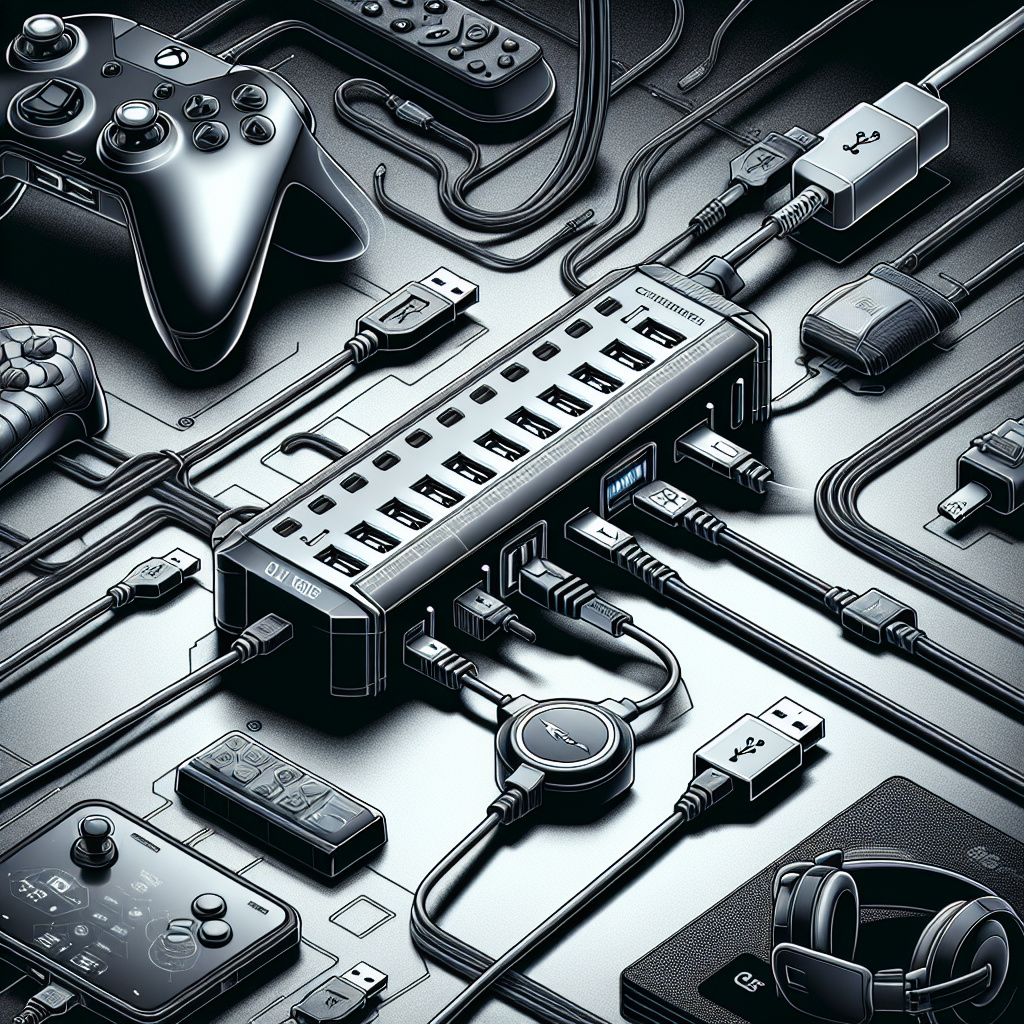As gaming technology continues to advance, the need for efficient power distribution becomes increasingly critical. Gamers frequently use USB hubs to connect multiple devices, such as controllers, keyboards, headsets, and charging stations. However, a common concern among gamers is whether these USB hubs affect the power supply to their gaming devices. This article delves into how USB hubs operate, the variations in hub designs, their impact on power delivery, and best practices for gamers seeking optimal performance.
| Hub Type | Power Supply | Ports | Maximum Output |
|---|---|---|---|
| Passive USB Hub | Draws power from the host device | 4-7 | Up to 500mA per port |
| Active USB Hub | Uses an external power source | 4-10+ | Up to 900mA per port |
Understanding USB Hubs
To grasp the effect of USB hubs on power supply, it’s essential to understand the two primary types: passive and active hubs.
Passive USB Hubs
Passive hubs are the simpler of the two. They do not have an external power source and instead draw their power directly from the computer or host device. This means that the combined power output from all devices connected to the hub cannot exceed what the host can provide. This limitation can be problematic when multiple high-drain devices are connected.
Active USB Hubs
Contrarily, active USB hubs come equipped with their own power supply. This allows them to provide more current to connected devices, making them ideal for devices that require more power, such as gaming peripherals. An active hub can support multiple devices without risking power shortages.
Power Requirements for Gaming Devices
Gaming devices often come with specific power demands. Here’s a glimpse into the power requirements for common gaming peripherals:
| Device Type | Typical Power Requirement |
|---|---|
| Gaming Controller | 100-200mA |
| Mechanical Gaming Keyboard | 300-500mA |
| Gaming Mouse | 100-500mA |
| VR Headset | 1A and above |
Impact of USB Hubs on Device Performance
The performance of gaming devices can be influenced by the choice of USB hub. A passive hub may struggle to adequately power multiple devices, leading to performance issues such as:
- Unresponsive peripherals
- Frequent disconnections
- Increased latency
On the other hand, utilizing an active USB hub generally ensures better performance, as it can provide separate power to each connected device, reducing the risk of power-related issues.
Choosing the Right USB Hub for Gaming
When selecting a USB hub for gaming, there are several factors to consider:
1. Power Supply Capability
Choose an active USB hub with sufficient power output to handle the total power draw of all devices connected to it. Always check the manufacturer’s specifications to account for UHD gaming mice, VR sets, and other high-drain devices.
2. Number of Ports
Ensure that the hub has enough ports for your current and future peripherals. Gamers often expand their setups over time; therefore, having extra ports can be beneficial.
3. USB Standards
Opt for hubs that support the latest USB standards, such as USB 3.0 or USB 3.1, which offer faster data transfer rates and better power management.
4. Build Quality
The build quality of the hub can influence its longevity and reliability. Look for hubs made from durable materials and those that come with a good warranty.
Best Practices for Using USB Hubs
To maximize performance and reliability while using USB hubs for gaming, consider the following best practices:
- Utilize Active Hubs: As previously mentioned, opt for active USB hubs when connecting multiple high-power devices.
- Limit Overloading: Avoid connecting devices that collectively exceed the hub’s maximum output.
- Stay Organized: Use cable management solutions to keep your gaming space orderly and prevent tangling that could lead to connectivity problems.
- Regularly Check for Updates: Keep your gaming devices and USB hubs up-to-date with the latest firmware or software to ensure compatibility and peak performance.
Conclusion
In summary, the type of USB hub used can significantly impact the power supply to gaming devices. Passive hubs may result in performance deficiencies due to limited power provision, while active hubs are capable of effectively supporting multiple devices without compromising functionality. By understanding the power requirements of gaming peripherals and selecting the appropriate hub, gamers can ensure smooth and efficient operation of their setups. Following the best practices highlighted can further enhance performance and help maintain a seamless gaming experience.

